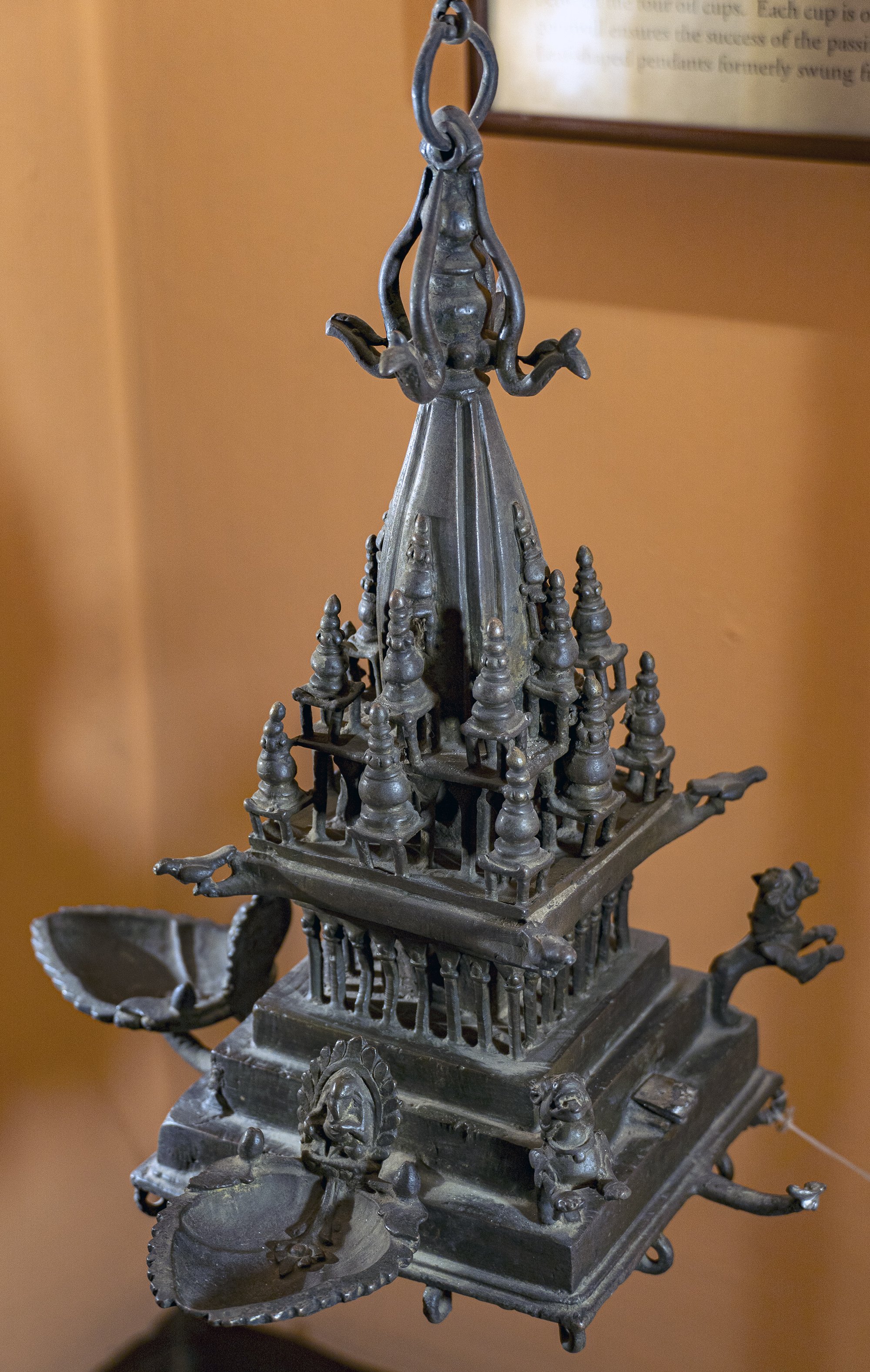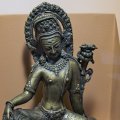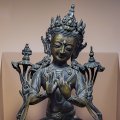Patan Museum (Nepal): photo 30
Photo 30 of 212 in Gallery: Patan Museum (Nepal)

Image title: Sacred oil lamp (Dalu)
Description of the photo
This Bronze sculpture shows a Sacred oil lamp (dalu), from the 17th/18th century origination from Nepal.—Materials used: Bronze
Description:
It is a Nepalese tradition to hang outdoors from the roof eaves an oil lamp (dalu) to illuminate and sanctify the sacred processions that pass by in the streets. Although some lamps are only a simple clay receptacle, others are elaborate bronze castings such as this It replicates the tall stone temple opposite the museum which was consecrated Krishna in 1637 by one of the kings who lived in this palace.
Like the temple, the lamp is decorated with many secondary finials and various symbolic creatures. Four serpents depend from the topmost finial, four birds occupy the second-story terrace corners, and four guardian lions (one is missing) are placed at the temple’s corners between the four oil cups. Each cup is overseen by a tiny image of Ganesha, the deity whose goodwill ensures the success of the passing festival and the householders’ participation in it. Leaf-shaped pendants formerly swung from the rings along the lamp's lower edge.
Gallery information:
The Patan Museum is located on the Durbar square of Patan (Lalitpur/Lalitapura, Kathmandu, Nepal) which is associated Keshav Narayan Chowk (Keshavnarayan)—a form of Lord Vishnu. Being listed as a World Heritage Site, the whole of Durbar square is filled with exquisite temples, sculptures and other ancient structures, of which the ancient history history can be traced to the Malla Kings of Lalitpur. It is an important site for both Buddhism and Hinduism.
Photo details:
Date: 2019-12-02
Camera: SONY ILCE-6400
Exposure: 1/15
Aperture: f/4.5
ISO: 100
Focal length: 39mm
High resolution:
Download file
Size: 2.95 MB
Resolution: 2000 x 3155
© Photograph by Gabe Hiemstra.
License: CC BY-NC-ND 4.0

